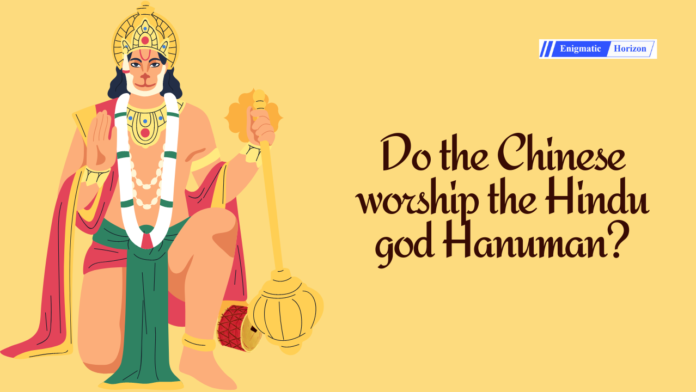Shubhi Agrawal
From Bollywood to Beijing, the worship of Hanuman has transcended borders and cultural barriers. It makes the Hindu deity a beloved symbol of strength and courage in China. Although Hanuman is not a traditional Chinese deity, his influence on Chinese culture and religion has continued to grow in recent years. From the Shaolin Temple to Hanuman festivals, Hanuman has become an integral part of China’s spiritual and cultural landscape. In this article, we will explore the fascinating history and enduring influence of Hanuman in China and his role in promoting cultural exchange and understanding between India and China.
Historical & Cultural Context
The Silk Road was an ancient trade route connecting China and India. It played a significant role in facilitating cultural exchange between the two countries. People and ideas from India and China could travel and interact through the Silk Road.
This route facilitated the exchange of goods, ideas, and cultural practices, including the adoption of Hinduism and Buddhism in China. Scholars believe that the worship of Hanuman in China began during this period.
Is Hanuman the Monkey King?
In China, people often compare Hanuman to the Monkey King, a beloved character from the Chinese epic Journey to the West. The Monkey King is a mischievous yet powerful character who possesses incredible strength and agility. He is known for his fighting skills and is often depicted wielding a staff, which he uses to defeat his enemies.
There are several similarities between Hanuman and the Monkey King. Monkey King and Hanuman are monkey deities revered for their martial prowess and great physical strength. Both are also known for their loyalty, courage, and willingness to serve their masters, making them popular figures in both Hindu and Chinese cultures. The color red is associated with both the Monkey King and Hanuman, and it is considered a symbol of good luck in both Hinduism and Chinese culture. Could it be that the Monkey King and Hanuman are the same? Considering the fact that Hanuman is an immortal, this is quite possible.
Shaolin Temple and the Worship of Hanuman
The Shaolin Temple, located in Henan Province, is a Buddhist temple famous for its association with martial arts. Several statues of Hanuman are present in the temple, which reveres him as the patron saint of martial arts. The Shaolin Temple has played a crucial role in promoting the worship of Hanuman in China.
Hanuman in China
The worship of Hanuman in China is not recent but has been prevalent for several centuries. Scholars believe that the worship of Hanuman in China started during the Tang Dynasty (618-907 AD). The Silk Road, established between India and China during this period, was crucial in cultural exchange. The teachings of Buddhism and Hinduism were brought back to China by Chinese pilgrims who traveled to India, and then they adopted them.
Chinese people revere Hanuman as the patron saint of martial arts and identify him by different names such as “Anoman” and “Anman.” Chinese martial artists consider Hanuman a symbol of strength, courage, and loyalty, often invoking his blessings before practicing martial arts. The Shaolin Temple, regarded as the birthplace of Chinese martial arts, is especially popular for worshiping Hanuman, with several deity statues in the temple.
Hanuman festivals in China?
In recent years, Hanuman festivals can be seen to have become popular in China as well. People hold festivals to honor Hanuman, and in addition, they also showcase various cultural performances, such as dance and music. Both Hindus and non-Hindus attend these festivals, which serve as a platform for cultural exchange and understanding. These festivals allow people from different backgrounds to come together and celebrate the shared cultural heritage of India and China.
Hanuman in Chinese Literature and Art
Hanuman has also appeared in Chinese literature and art. The Chinese classic Investiture of the Gods references Hanuman as a deity with the power to control the wind. Additionally, there are several depictions of Hanuman in Chinese art, particularly in the form of stone sculptures.
The influence of Hanuman in Chinese Culture
The influence of Hanuman on Chinese culture extends beyond martial arts and religion. The deity has also influenced Chinese folklore and popular culture. For example, in the Chinese film Monkey King: Hero is Back, Hanuman appears as a character who helps the Monkey King defeat his enemies.
The worship of Hanuman in China demonstrates the ongoing cultural exchange between India and China throughout history. The Chinese adoption of Hanuman as a patron saint of martial arts shows reverence for the deity and his teachings. The similarities between Hanuman and the Monkey King further demonstrate China and India’s common cultural heritage. Despite their differences, people across the world value the ideals of loyalty, courage, and strength represented by both Hanuman and the Monkey King.
